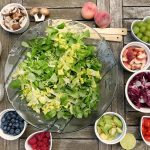This is a list of all the food that you are allowed to eat on the paleo diet. Make sure your paleo diet grocery list includes these meats, vegetables, fruits, nuts, seeds, and oils. Here’s an example of what a day of paleo eating might look like.
The goal of the paleo diet is to eat like our hunter-gatherer ancestors. I’m wondering what sort of foods one should eat to follow this diet, and which ones to avoid.
If you are new to the paleo diet it can be difficult to know what to eat for breakfast, lunch and dinner. There are certain foods you can eat and others that you cannot while following this diet. There are some foods that are allowed sometimes, even though they fall into a grey area.
Our list of paleo-approved foods will help you plan your meals whether you are eating out or cooking at home.
Whether you’re a beginner, looking for a refresher on the rules or just want to adopt some of the healthiest parts of the Paleo Diet, here’s what you need to know to eat paleo.
Paleo Diet
The idea behind the “paleo diet” is that the current Western diet is causing an increase in chronic diseases such as obesity, heart disease, and cancer.
The Paleo diet is thought to have many benefits, such as reducing inflammation, improving workouts, increasing energy, helping with weight loss, stabilizing blood sugar, and reducing the risk of chronic diseases.
The main advantages of the paleo diet are that it emphasizes eating whole foods, including lots of fruits and vegetables, as well as healthy proteins and fats. Meanwhile, it cuts down on processed foods, sugar, and salt.
If you want to eat a more nutritious diet, these guidelines may sound familiar and quite healthy.
The paleo diet has caused controversy among scientists because it advocates cutting out grains, dairy, and legumes. Paleo advocates may claim that these foods are not healthful, but they are good sources of fiber, vitamins and minerals.
Foods You Can Eat on the Paleo Diet
The paleo diet is based on the belief that humans should eat the same foods that our ancestors did. This means that the diet consists mostly of meat, fish, vegetables, and fruit. This includes:
- Grass-fed meat: choosing grass-fed is healthier for you
- Fish and seafood: choose wild-caught
- Fresh fruits and veggies
- Eggs
- Nuts and seeds
- Healthy oils (olive, walnut, flaxseed, macadamia, avocado, coconut)
1. Meat and Seafood
Most meat and seafood fits on a paleo diet. Meat contains lean protein, which is necessary for the construction of cells and tissues.
Protein also helps keep you full. Be careful of pre-marinated and cured meats which might contain added sugar. Common meat and seafood choices include:
Paleo meat and seafood
- Chicken
- Beef
- Salmon
- Tuna
- Pork
- Bacon
- Cod
- Turkey
CHICKEN
For many Paleo eaters chicken becomes a staple on their daily menu, and it’s easy to understand why. One of the most popular dishes in restaurants is also one of the easiest to make Paleo-friendly. You can stick to your plan even when you’re out to dinner with friends.
Cooking chicken is easy and versatile. There are many recipes for different chicken dishes so you will never run out of ideas.
Health Benefits of Chicken
The main benefit of chicken is the quality of protein it provides. If you buy organic free-range chicken, you will be closely replicating the food a caveman might have eaten.
We’re trying to make do with what we have, even though it’s not at all like what prehistoric man would have eaten.
Vitamin B-6 is essential for keeping your energy levels up and staying alert. It makes up 25% of the recommended daily intake of vitamins. Protein makes up 42% of your daily protein requirement. It is involved in over 300 different enzyme processes, including metabolism and energy production
Magnesium is an important mineral for overall body function. It is involved in over 300 different enzyme processes, including metabolism and energy production. Vitamin B-12 – 5% – Increased energy levels.
The paleo diet recommends grass-fed meat over meat from grain-fed animals because it is leaner and has more omega-3 fatty acids. These healthy fats reduce inflammation in the body and protect your heart.
A typical American diet is not good for you because it is high in saturated and trans fats and lower in healthy poly- and monounsaturated fats. The paleo diet is different because it emphasizes grass-fed meats which are good for you.
SALMON
Basically, you need to start eating more salmon. Wild caught salmon is more expensive than other seafood, but it is high in protein, omega-3s, and other vitamins and minerals.
Our fishing abilities are what helped us beat out rival Neanderthals, so it’s clear that Paleo man would have eaten their fair share of fish, especially fish that don’t try to eat you.
Health Benefits of Salmon
The omega-3s in salmon have anti-inflammatory benefits, while the protein content helps to build lean muscle. This food not only has a high protein and omega-3 content, but also contains a variety of other vitamins and minerals.
Eating salmon every day or every 3 days has immediate benefits and prevents long-term inflammation-based conditions.
Eating wild seafood instead of farm-raised seafood may help you get more omega-3 fatty acids in your diet. When eating paleo, look for wild salmon and other sustainably-caught seafood.
LEAN BEEF
The Paleo diet includes a lot of beef, which is one of the meatiest meats. The best way to enjoy beef is by choosing lean cuts and ensuring it is organic.
Organic certification is important because it means the cows were fed grass that wasn’t treated with chemicals, and the cows weren’t given antibiotics or other drugs to keep them healthy. You want to get meat that is as close as possible to being natural and this is the best that our modern world can provide.
Health Benefits of Lean Beef
If you choose lean beef, you will consume less saturated fat and get high-quality protein. Protein is essential for building strong muscles and can also help you feel fuller for longer.
It’s a good idea to eat a variety of meat, as ancient humans would have eaten whatever animals they came across.
2. Fruits and Vegetables
The benefits of fruits and vegetables are widely accepted. They are chock-full of vitamins, minerals, fiber and antioxidants. The only downside to the paleo diet is that some vegetables are high in starch (potatoes) and some fruits are high in sugar (bananas).
Try to eat these foods in moderation if you want to lose weight or control your blood sugar. Strict versions of the diet do not allow potatoes.
Some people who follow a paleo diet wonder if eating bananas is allowed. This is because bananas contain more sugar than some other foods. They are considered paleo. A medium banana has about 100 calories, 3 grams of fiber, and 25 grams of carbohydrates. Bananas are a healthy choice because they are an unprocessed, whole food. They are also a good source of potassium.
To eat paleo, you should focus on eating unprocessed, whole foods. Fruits and vegetables should be a big part of your diet. While frozen vegetables are technically allowed on a paleo diet, they are not typically considered to be a healthy option. This is because they are often times loaded with added salt and other preservatives.
Examples of produce to eat on a paleo diet:
Paleo vegetables:
- Cauliflower
- Broccoli
- Brussels sprouts
- Sweet potatoes
- Butternut squash
- Cabbage
- Spinach
Paleo fruits:
- Apples
- Berries: including blackberries, blueberries and strawberries
- Melon
- Grapes
- Bananas
- Citrus fruits
- Peaches
- Plums
ASPARAGUS
Some of the key health benefits of asparagus include: When eating asparagus, it is important to keep in mind that it is not only a healthy Paleo food, but also one of the most healthy foods around. Some of the key health benefits of asparagus include:
This food contains fiber to assist with digestion, and many people don’t know that it can be eaten raw and fresh – and tastes great doing so. One way to cook asparagus is by steaming them, which is fast. Another way is to grill them, which makes them taste great.
Health Benefits of Asparagus
There are several benefits to eating asparagus, not just the fact that it tastes good. You’ll be improving your digestion. This is because vegetables provide the body with important nutrients and minerals. It’s important to eat plenty of vegetables to get important nutrients and minerals, since meat doesn’t have any fiber.
Asparagus is a unique vegetable in terms of its vitamin and mineral content. Make sure to include it in your diet frequently.
Vitamin Breakdown per Cup
- Fiber – 11% – Fiber is essential to the Paleo way of eating.
- Vitamin A
- Iron – 16% – A non-meat source of iron. Bonus!
- Vitamin C has plenty of immune boosting power.
CELERY
Celery is the perfect food to give you the Stone Age feel, with all the meat you’ll be eating. This vegetable is very hydrating, so it is a good idea to add it to green smoothies to add some water to the drink.
This vegetable is not only good for cooking soups, but also makes a great snack in its stalk form. You can bring it with you anywhere and eat it anytime you need to.
Health Benefits of Celery
Celery helps your body get rid of extra fluid and also gets rid of toxins. Some traditional medicine forms use the extracts of this plant because it can help regulate blood pressure levels and even show anti-cancer properties.
Celery provides a little boost of Vitamin A which is always good. One cup of this food provides 5% of your daily Vitamin C needs, and 5% of your daily Vitamin A needs. Vitamin A is the second most popular vitamin, after C. Vitamin B-6 only makes up 5% of the recommended daily intake, so it’s not a huge source, but it’s still something. It’s going to help with regularity as well as keeping you feeling full. Fiber contributes to regularity and a sense of fullness, both of which are important when consuming a high-protein diet.
3. Eggs
Eggs can be eaten because they contain a lot of protein, B vitamins, minerals, and antioxidants. They are also affordable and easy to prepare. Eggs from chickens raised in cages have a lower omega-3 content than eggs from cage-free or organic chickens.
They say eggs are good because you’re getting all the nutrients of an animal without having to eat the entire animal. You can eat eggs every day because they contain a lot of protein and other nutrients like vitamins and minerals.
Health Benefits of Eggs
The American Egg Board promoted egg consumption through public awareness commercials for many years. There are many diets that try to answer the question of whether you should eat the whole egg or just the whites.
Paleolithic man would not have stopped to separate the egg yolk from the egg white and would have eaten the entire egg. The majority of the nutrients are in the yolk.
Vitamin Breakdown per Large Egg
- Protein – 12% – A respectable amount of protein, considering that’s just one egg.
- Vitamin B-12 is an important vitamin for preventing hair loss and promoting healthy hair and nails.
- Vitamin A makes up 5% of this vegetable, which is not as much as some other vegetables on our list, but it is not a bad amount.
Eating eggs will give you energy to power through your workday.
4. Nuts and Seeds
Nuts and seeds are full of healthy fats, fiber and protein which makes them a great snack for people who are looking for a nutritious option. Nuts were found in prehistoric time, so you can feel good about loading up your shopping cart with them.
You should keep in mind that peanuts are not paleo because they are technically legumes.
Paleo nuts and seeds
- Almonds
- Cashews
- Pistachios
- Walnuts
- Macadamia nuts
- Pecans
- Hazelnuts
- Pine nuts
- Brazil nuts
- Pumpkin seeds (pepitas)
- Chia seeds
- Sunflower seeds
- Flax seeds
ALMONDS
A small number of almonds can provide you with long-lasting energy if you need it. If you want to make your dish look more fancy, you can add slivered almonds. This will also add a bit of crunch and more nutrients.
Almonds are considered a Paleo food by most people and almond flour is often used as a replacement for regular flour in Paleo baking.
Health Benefits of Almonds
The fiber content of almonds cannot be ignored, as it is one of the main components of the Paleo diet. Not only are almonds a good source of protein, but they are also high in calcium. This is important to note if you are avoiding dairy products.
An adequate amount of magnesium is necessary for the body on a daily basis. Almonds are a good source of protein, so you won’t be short of protein on the Paleo diet.
5. Healthy Oils
Oils are trickier. Oils that are healthy on the paleo diet include olive, walnut, flaxseed, macadamia, avocado, and coconut oils. These oils are allowed because they were gathered directly from plants.
Although our hunter-gatherer ancestors probably did not consume flaxseed oil, we are allowed to because it contains high levels of alpha-linolenic acid (ALA), a type of heart-healthy, anti-inflammatory omega-3 fatty acid.
Paleo Oils
- Olive oil
- Walnut oil
- Flaxseed oil
- Macadamia oil
- Avocado oil
- Coconut oil
READ MORE: Paleo Diet Guide For Beginners









